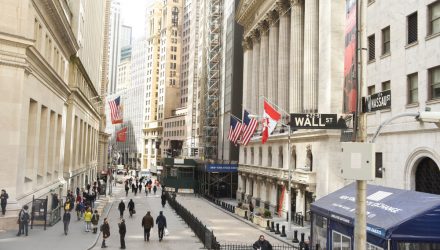Wall Street appears to be placing its bets on more volatility ahead as inflation continues to rise while the U.S. Federal Reserve resumes its path of raising interest rates in response to rising prices. One way to mitigate volatility risk is to adopt strategies implemented by hedge funds. Rather than having to choose between a variety of strategies, another way is to simply get risk mitigation built into a managed futures ETF, like the iMGP DBi Managed Futures Strategy ETF (DBMF).
“Over 1.1 million call-option contracts on the Cboe Volatility Index (VIX) traded on Monday, the highest since the Covid-19 crash in March 2020,” a Wall Street Journal report noted. “That’s over three-times the average of 313,000 contracts that exchanged hands on a daily basis for the year prior to this week.”
Treasury yields have been rising higher in the short end of the yield curve, flashing a recession signal. This typically occurs when short-term yields rise above higher yields, adding to the angst in the capital markets.
As such, traders are betting on more market fluctuations to come.
“The surge in activity came as the S&P 500 fell to a new low on the year and the VIX rallied to its highest close since mid-June, according to Susquehanna International Group,” the report added. “Traders are betting on bigger stock-market swings across the options universe. Friday saw the most bearish put-options traded across U.S. stocks, ETFs, and indexes since 2008.”
Mitigate Risk Like a Hedge Fund
DBMF is a managed futures fund designed to capture performance no matter how equity markets are moving, and it seeks long-term capital appreciation by investing in some of the most liquid U.S.-based futures contracts in a strategy utilized by hedge funds.
DBMF is actively managed, providing dynamic exposure to long and short positions within derivatives, mostly futures contracts, and forward contracts in a variety of asset classes. The fund makes use of a Dynamic Beta Engine, which is a quantitative model that attempts to ascertain how the largest commodity-trading advisor hedge funds allocate their positions.
The strategy achieves this by analyzing the trailing 60-day performance of CTA hedge funds and then determining a portfolio of liquid contracts that would mimic the hedge funds’ performance. Under normal market conditions, the fund seeks to maintain volatility between 8%–10% annually — consider that the CBOE Volatility Index (VIX) is up over 80% for the year.
For more news, information, and strategy, visit the Managed Futures Channel.

